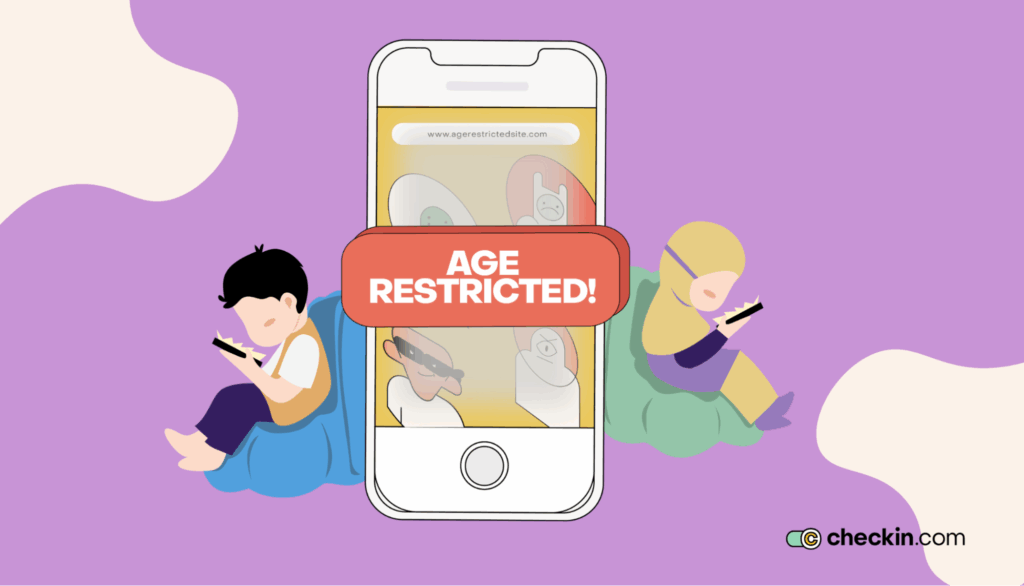
The internet is filled with age-sensitive content. From alcohol vendors and gambling sites to violent content and adult chat rooms, there are a lot of unsuitable places for young people.
Despite the risks, lots of websites still use weak age verification systems like self-reporting.
These systems are easy to bypass. This puts kids at risk and leaves your business vulnerable to non-compliance penalties.
A strong age verification system prevents minors from accessing inappropriate content and keeps adults from maliciously entering child-friendly online spaces.
Let’s look at the dangers of poor age assurance systems and what you need to look for to make sure your age verification processes protect minors properly.
What's an age verification system, and who needs one?
An age verification system confirms the age of a user before granting access to age-restricted content, services, or products.
It’s especially important within industries where age restrictions are a legal requirement, such as:
- Alcohol, tobacco, cannabis sales
- Gambling and online gaming
- Adult content
- Social media platforms
- Dating sites
- Content streaming
- Financial services
The aim is to protect minors and ensure legal compliance. On the one hand, it prevents underage users from accessing services restricted to adults. It also prevents nefarious adults from accessing services designed for minors.
Age verification systems can range from self-declaration to parental consent to facial biometrics.
Up until now, self-declaration has been the main form of age verification. Most organizations use self-declaration, but it’s highly ineffective as users can simply lie.
It’s so ineffective that almost 75% of organizations report attempts by under-18s to access their services.
The problem is that industries that deal in age-restricted products face risks of non-compliance penalties, harm to minors, and reputational damage.
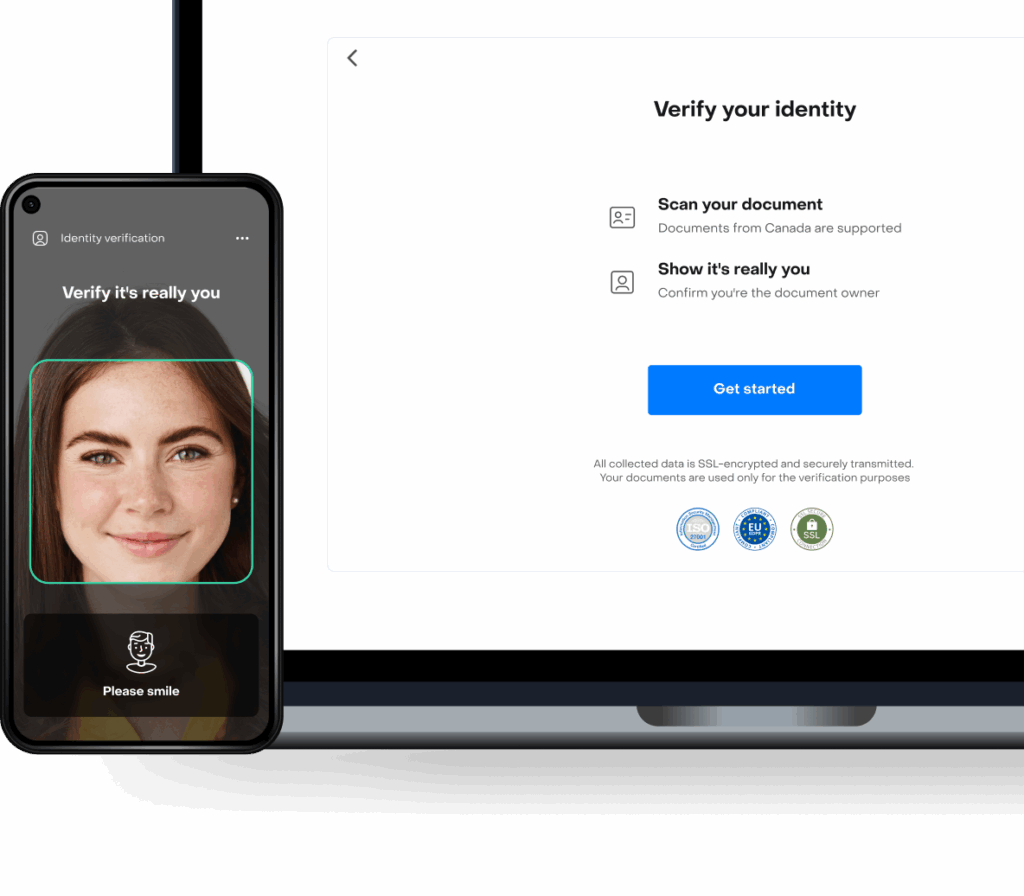
This is why robust systems like ID document authentication and biometric verification are becoming so important. They’re far harder to bypass, preventing age-related fraud.
But currently, only 28% of companies use biometric measures to verify age.
Companies that implement these stronger methods set themselves apart from their competition. They reduce the risks of underage access and non-compliance with data privacy and age restriction legislation.
Why are high-quality age verification systems so important?
Poor age verification methods are harmful to minors. They expose underage users to harmful content or people and leave companies vulnerable to regulatory penalties.
Strict age verification makes sure only age-appropriate users access age-restricted services.
Here’s why it’s so important.
They protect minors from harmful content
Minors are highly vulnerable to the impacts of inappropriate content, including violence, sexual material, harmful ideologies, and bad actors.
Exposure to age-restricted content can negatively affect a minor’s mental health, development, and well-being.
While self-declaration and parental consent aim to offer a barrier, they’re easy to bypass.
Strong age-verification methods like ID checks, biometric verification, and liveness detection prevent fraudulent attempts to open accounts by underage users.
This protects young people and keeps businesses compliant with age restriction regulatory requirements.
They weed out fraudulent activity
Minors often try to circumvent age checks to access age-restricted goods, services, and content.
For example, research shows that 47% of children aged 8–15, with at least one social media profile, enter their user age as 16 or over.
This isn’t just dangerous. It’s also fraudulent.
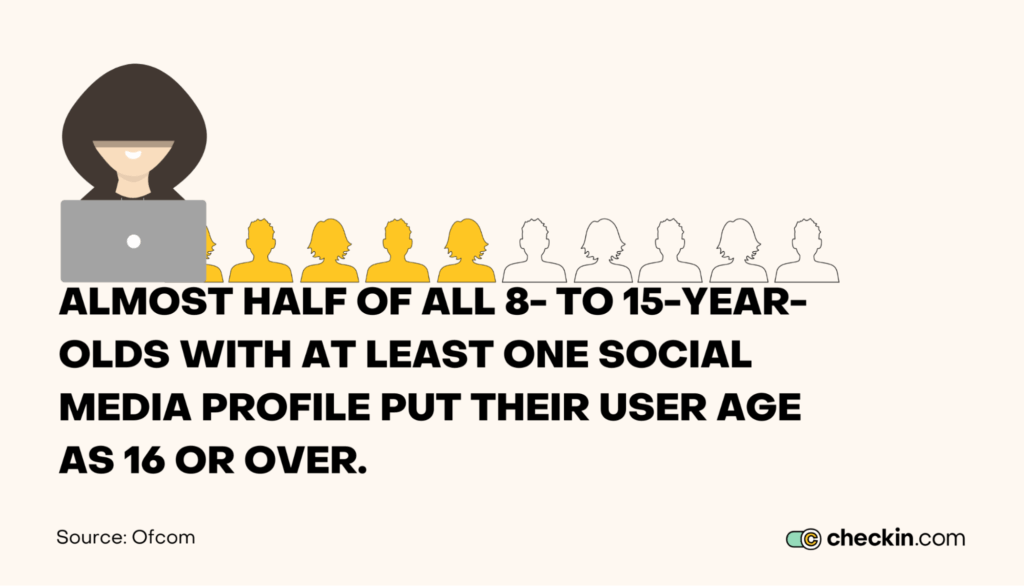
But it’s not just minors that companies have to worry about.
Malicious adults use AI-generated IDs and stolen credentials to impersonate minors to access services aimed at young people. This leaves minors open to grooming, exploitation, and ID fraud.
This is why strong age verification is so important.
Consider that 59% of people find it hard to spot content generated by AI. This means human agents struggle to spot deepfakes and AI-generated IDs.
Intelligent age-verification solutions use AI algorithms to identify these forgeries, preventing bad actors from slipping through the net.
They target your content to the right audience
Accurate age verification does more than just protect minors. It improves marketing and advertising.
Many businesses struggle with poorly-targeted content as weak online age verification systems skew age data. Across organizations, 44% of those polled say good age assurance makes it easier to target users appropriately.
With AI-driven age verification systems, businesses have accurate age data that enables them to offer age-appropriate experiences. This maximizes engagement while ensuring compliance.
They help you stay compliant with changing laws
Governments across the world are tightening age verification laws to protect minors.
For example, Canada just created the S-210 Bill to mandate age verification for adult websites. Equally, China just introduced SAPP to demand real-name identification for all online gaming.
Non-compliance with new legislation can lead to hefty fines, legal penalties, and business shutdowns.
The problem with legacy age verification systems is that they don’t update with regulatory changes automatically. Businesses may find themselves accidentally non-compliant.
AI-powered age-verification systems update compliance models automatically as global laws change. This keeps businesses compliant throughout all regulatory changes.
What are the dangers of a poor age verification system?
The dangers of weak age verification are complex. Minors are vulnerable to harmful content, and businesses are at risk of non-compliance.
Relying on outdated, often easily bypassed systems threatens business stability. Here’s how.
Exposure to inappropriate content
Weak verification allows minors to access inappropriate content. Viewing this type of content is harmful to young people.
It can be psychologically traumatic, distorting views of sexuality, increasing risk-taking, and normalizing harmful ideologies.
Age verification methods that can be easily bypassed, like self-declaration, have already resulted in lots of young people viewing unsuitable content. Research shows that 82% of teens have been exposed to graphic or violent content online, while 75% have accessed sexual content.
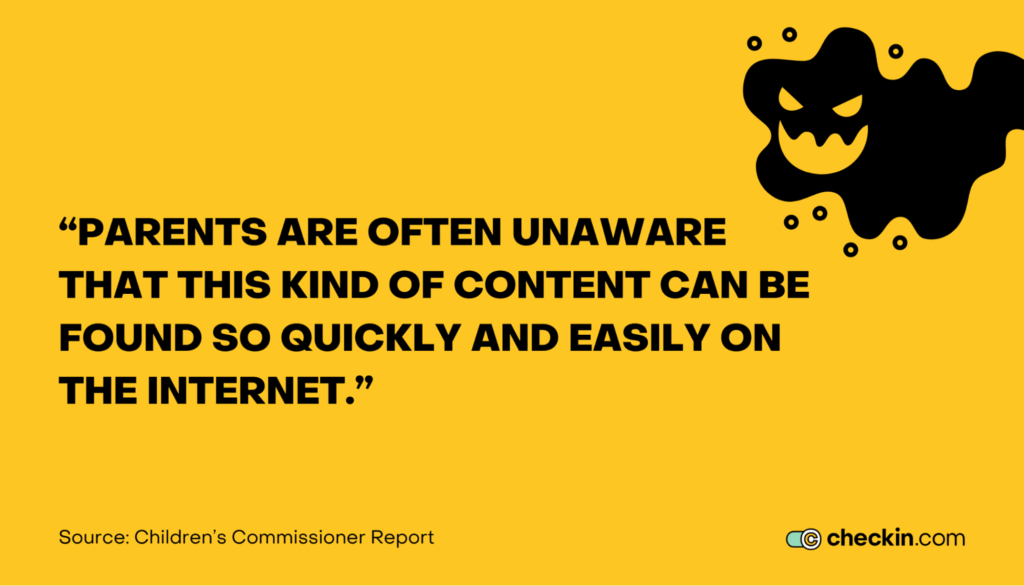
Despite the risks, lots of parents are unaware their children are accessing this type of content. As a recent report by the UK’s Children’s Commissioner explains, “Parents are often unaware that this kind of content can be found so quickly and easily on the internet.”
In this sense, it’s vital for businesses to make sure they have the right access controls to prevent children from bypassing basic age verification. Otherwise, they become partly responsible for harm to minors.
Users risk bullying and abuse
Poor verification leaves online environments vulnerable to exploitation, cyberbullying, and grooming.
Minors are targeted by online predators and cyberbullies. These bad actors create fake accounts, pretending to be younger people to infiltrate digital spaces aimed at children.
Not only can this cause emotional distress, depression, and self-harm in young people, but there’s also the potential for real-world abuse.
Nearly one in five of 8- to 16-year-olds have encountered an online predator, while 76% of teenagers experience online bullying.
Without strong verification methods, this problem will continue to escalate.
Access to inappropriate goods
When ecommerce sites and delivery services fail to properly verify buyers, young people can access adult-only products like alcohol and tobacco.
It’s not just that underage purchases are illegal. Putting age-restricted products in the hands of minors can lead to health risks, addiction problems, and legal consequences for both the business and the minor.
Access to illegal activities
Poor age verification techniques allow minors to engage in illegal activities, such as accessing illicit marketplaces or gambling online.
It’s not just self-declaration and parental consent that are easy to trick. Minors can also use deepfakes to circumvent basic manual ID checks as it’s hard for human reviewers to recognize the difference.
This can result in legal repercussions for the minor. It also leaves them exposed to exploitation, victimization, and involvement in criminal activity.
Poor data privacy
The Children’s Online Privacy Protection Act (COPPA) specifically prevents companies from collecting data from minors.
Poor age verification systems won’t comply with this and other related regulations, as it’s easy for minors to bypass the system. This results in companies unwittingly collecting data from underage users.
For minors, this leaves them open to inappropriate marketing.
For businesses, this can result in huge fines and legal backlash.
Take TikTok, for example. The ICO recently fined the social media platform $16 million for misusing children’s data by allowing under 13s to access their services due to weak age verification.
Legal repercussions
When minors access age-restricted content and services, businesses face non-compliance with age-restriction laws and data privacy regulations.
This doesn’t only harm minors. It can result in legal penalties for the offending companies, such as heavy fines, lawsuits, and business closures.
What to look for when picking an age verification system
Choosing the right age-verification software is critical to keeping your business compliant while protecting minors.
But not all age verification tools offer the same level of accuracy, security, and user-friendliness.
Here’s what you need to prioritize when picking an age verification service.
Accurate, reliable age assurance mechanisms
Your age verification software needs to be accurate. This ensures that only eligible users can gain access while preventing false positives that wrongly block genuine users.
In fact, 56% of organizations say accuracy is the number one priority when choosing age assurance methods.
The most effective solutions offer the following features:
- ID scanning - AI-powered document authentication identifies forgeries and deepfakes.
- Biometric age assurance - AI algorithms compare facial features in document images and live selfies to databases of known age-related characteristics. It looks at elements like skin texture, bone structure, and wrinkles to determine the user's.
- Face matching - Algorithms compare the user’s live selfie to the ID image to check for identity mismatches to prevent young people using fake or stolen ID.
- Facial recognition - The system automatically cross-references a user’s identity with government databases and watchlists to double-check a person’s identity data is correct.
- Liveness detection - This ensures the applicant is physically present, preventing pre-recorded video spoofing and deepfakes.
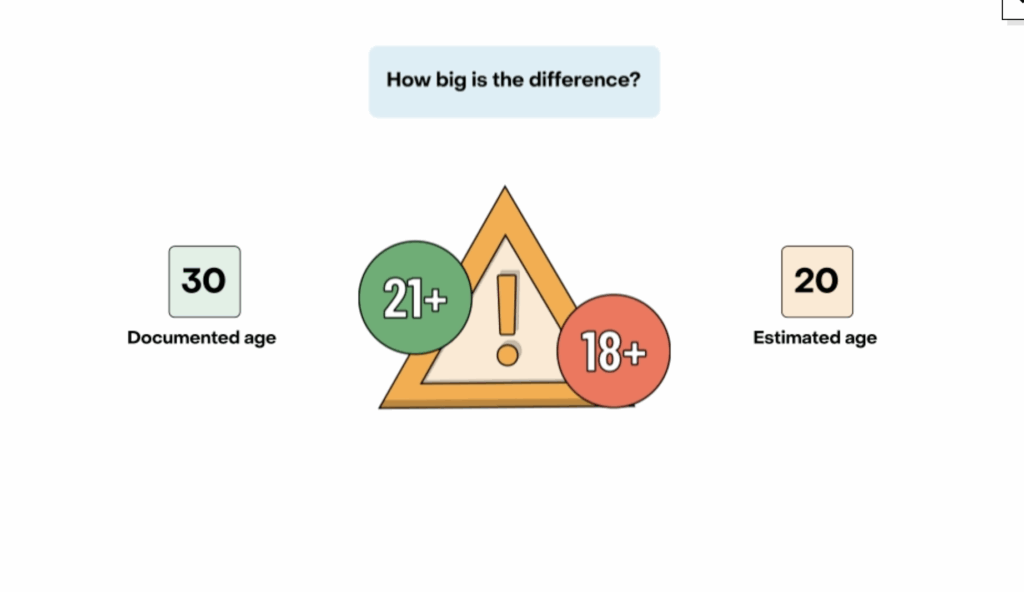
While accuracy is paramount, your age verification software also needs to be easy and fast to use.
Look for solutions that verify users quickly. For example, Checkin.com takes less than five seconds to verify users, compared to slower providers that take up to 20 minutes.
AI-driven fraud prevention
AI-powered fraud prevention stops underage users and bad actors from using forged documents, stolen identities, and deepfakes to bypass age verification processes.
Look for solutions that use:
- Bot detection, such as Checkin.com’s Botlens AI technology that detects bot activity in the onboarding process.
- AI document scanning to verify the authenticity of official documents.
- AI-driven biometric verification to ensure the applicant doesn’t use false identities.
- 3D liveness detection with motion pattern analysis and depth perception analysis to detect deepfakes and manipulated media.
- Real-time monitoring to flag suspicious behavior that indicates underage use throughout the customer lifecycle.
Global and local compliance models
Businesses need to meet legal age requirements for all jurisdictions in which they operate.
A strong age verification system automatically updates compliance models to align with changing regulations so you don’t fall out of compliance accidentally.
Find systems that offer:
- Pre-built compliance templates that align with major global legislation for data privacy, such as GDPR (EU), CCPA (US), PIPEDA (Canada)
- Pre-built compliance models that align with age-restriction legislations, such as COPPA (US) and the UK’s Online Safety Act
- Automatic updates that reflect legal changes in real time
- Customizable workflows for industry-specific compliance
- Compliance with all KYC and AML regulations
Privacy-preserving technology
Protecting user data is as important as verifying ages. Companies must use privacy-first age verification systems or risk non-compliance with children’s data privacy policies.
Find out if your chosen age verification software provides:
- Minimal data retention policies to avoid unnecessary storage of underage user information
- End-to-end encryption to prevent access to sensitive personal information
- AI-based age estimation that verifies users without storing personal documents
- Privacy-by-design principles that only collect and use the minimum data necessary to verify age
- Localized server hosting to ensure data storage aligns with local regulations
- Compliance with ISO 27001 to demonstrate a commitment to secure data handling, encryption, and privacy-by-design principles
Global coverage and localization
International businesses need age verification systems that support multiple languages and can assess local ID types.
Localized verification flows improve the customer experience and mean applicants make fewer mistakes.
For example, Checkin.com recognizes 14,000 different ID types from 190+ territories. The interface is also available in 80+ languages to help users complete age checks in their native tongue.
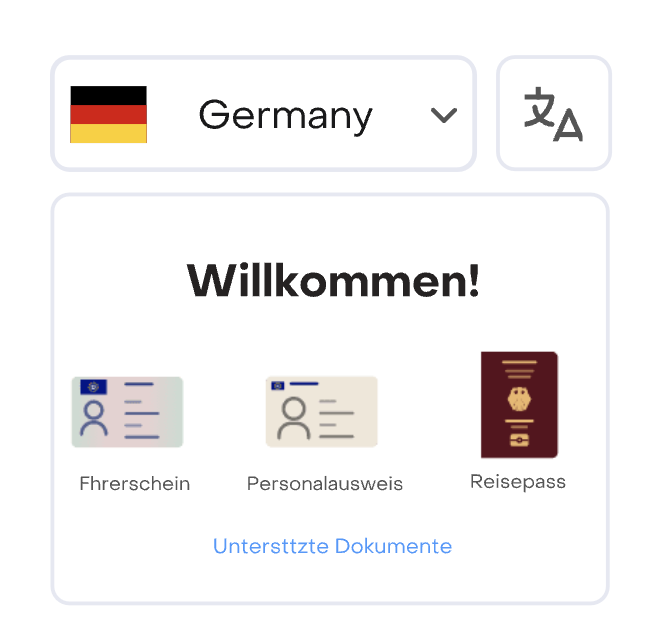
Look for:
- Multi-language support with accurate localization
- Global document verification capabilities
- Regional compliance settings that adapt to local laws
Easy-to-use interface and workflow
The best age verification tools balance security with usability. The process should be frictionless to prevent user abandonment while still ensuring compliance.
Make sure your system is easy enough for children to use properly. This reduces delays in processing time.
Find a solution with multiple verification options and fast, frictionless verification. It should offer an intuitive interface with multilingual support and real-time verification for smooth onboarding.
Analytics and reporting
Make sure your age verification software offers comprehensive analytics and reporting. This gives you insights into the effectiveness of age verification processes and fraud prevention.
It also simplifies compliance reporting by providing a thorough audit trail.
Find age verification tools that offer:
- Customizable reporting tools for compliance audits
- Real-time analytics that offer AI-based user trend analysis and fraud pattern assessments
- An easy-to-use dashboard to track cases and visualize trends
Integration and integration support
Connect your age verification tools to your existing tech stack to streamline workflows.
Integrating your age assurance software with your CRM platform and marketing software makes it easy for you to target content better. You can also connect it to online payment gateways and similar trigger points to reverify a user’s age at the point of sale.
Look for modular APIs and SDKs for easy implementation and automated synching to reduce manual data entry.
The best solutions also offer dedicated integration support to help you implement the software so it fits your existing workflows.
Protect minors without compromising experience
A robust age verification system protects minors and keeps you compliant.
This builds user trust and stops young people from traumatizing online experiences.
Self-declaration and parental consent simply aren’t good enough barriers to entry.
AI-driven systems verify ages accurately while protecting privacy, keeping you compliant, and improving the user experience.
Don’t rely on sub-par age verification systems. Explore how Checkin can help you protect young people from age-restricted content while easing the experience for legitimate users.